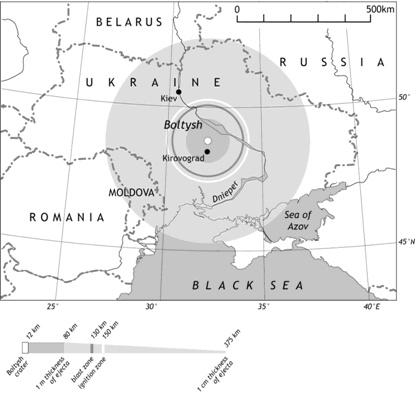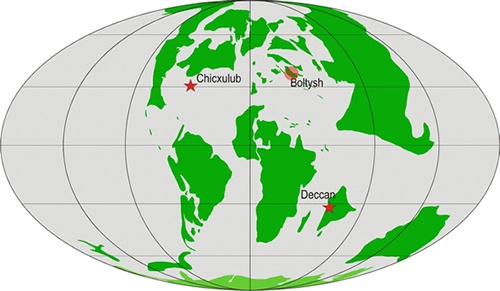In recent years, scientists have come to understand the importance of large meteorite impacts on the Earth and other planets in the solar system. Not only are meteorite impacts implicated in mass extinctions, they may have been important habitats for life in the early history of the Earth and Mars. Under particular scrutiny in this investigation is the role of the impact crater as a sedimentary basin and the potential of the microfossils preserved within it to record the history of plant life both in the immediate vicinity and beyond. The implications of this at a local (ecological) and global (climatological) scale are vast
The Boltysh meteorite impact crater in central Ukraine (below left) was formed on what would have been an island at the edge of a shallow sea some 65 million years ago. 
 |
Palaeotectonic map circa 65 Ma, showing the site of the Boltysh meteorite impact, the Chicxulub impact site in Mexico and the Deccan Traps large igneous province in India. |



